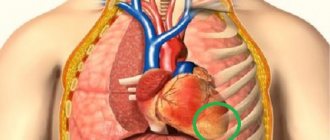Cephalohematoma is a birth injury to the soft tissues of the skull, as a result of which blood accumulates between the periosteum and bone. The fetal vessels are very fragile, and any mechanical impact on them is accompanied by damage to the vascular wall and bleeding. The blood clotting of a newborn also has some features. It takes a child's body longer to form a blood clot than an adult's.
Cephalohematoma is a fairly common pathology. For every 1000 newborns, there are 2-5 children with this birth injury. The resulting hematoma tends to gradually increase, and reaches its maximum size 2-3 days after birth. This pathological formation has the appearance of a tumor, the boundaries of which coincide with the edges of the bone (most often the parietal and occipital bones).
The relevance of the problem of cephalohematoma in pediatric practice is explained by the close relationship between birth trauma and pathology of the nervous system. Traumatic brain damage in newborns with cephalohematoma occurs in 30% of cases.
General information
Cephalohematoma is a condition in which hemorrhage occurs, localized between the periosteum and the outer surface of the skull bones.
This tumor forms immediately after the birth of the baby, is limited to the edges of a certain bone of the skull and disappears, depending on the individual characteristics, after 3-8 weeks. This condition is referred to as birth injuries of the baby. Externally expressed by swelling in the head area. This happens, according to statistics, in 3-5 cases per 1000 babies. The disease code according to ICD-10 is P12.0. A cephalohematoma is formed during the birth of the baby's head through the birth canal due to the displacement of the skin with the periosteum. As a result, the vessels that are located between the skin and the periosteum rupture, and an area filled with blood is formed. This “pocket” can contain from 5 to 150 ml of blood, which remains in a liquid state for a long time, since the newborn does not have enough clotting factors to clot it.
Diagnosis of cephalohematoma
The diagnosis of cephalohematoma is based on physical examination of the infant and collection of antenatal, intrapartum and postnatal history. Identification of a pathological neoplasm on days 2-3 after birth, the size of which coincides with the edges of the skull bone, is the main clinical criteria for the disease. Cephalohematoma should be differentiated from a birth tumor, subgaleal hemorrhages, and cerebral hernia.
Instrumental diagnostics are prescribed to clarify the size, prevalence and nature of the pathological neoplasm, in order to exclude combined pathology (fracture of the base of the skull):
- radiography of the skull;
- neurosonography;
- CT.
Laboratory tests are carried out to study the child’s blood clotting, determine the level of red blood cells, hemoglobin and bilirubin:
- general blood test (level of red blood cells, platelets, hemoglobin);
- biochemical blood test (determination of bilirubinemia);
- coagulogram.
Pathogenesis
Cephalohematoma is a consequence of soft tissue damage during childbirth . The essence of the mechanism of this injury is that as the child’s head passes through the birth canal, the bones of his skull are compressed, the soft tissues are displaced, and the vessels of the subosteum are ruptured. When the tendon helmet moves along with the skin, tension occurs on the fibrous fibers that connect it to the periosteum. Strong mechanical stress provokes damage to the small vessels of the periosteum, and blood from them pours into the subperiosteal space. As a result, a cephalohematoma is formed.
Until recently, experts believed that the main cause of this condition in infants was pathological childbirth. However, medical statistics record an increase in the number of cases of this diagnosis in recent years, and this also occurs in children born in physiological labor. Therefore, the development of cephalohematoma is currently associated with various factors, in particular with the incorrect position and presentation of the fetus, its large size, and diabetic fetopathy. Also, this pathology can be associated with various complications during pregnancy , the application of obstetric forceps during childbirth and the use of vacuum extraction.
Classification
Cephalohematomas are divided according to certain criteria.
According to the size of the subperiosteal hemorrhage:
- First degree – with a diameter of 4 cm or less.
- Second degree – with a diameter from 4.1 to 8 cm.
- Third degree – more than 8 cm.
If a baby is diagnosed with multiple cephalohematomas, the specialist evaluates the total area of hemorrhages.
In combination with other possible damage:
- with brain damage ( cerebral edema or cerebral hemorrhage, epidural hematoma);
- with a fracture of the skull bones;
- with neurological symptoms (focal and general brain symptoms).
According to the location of the cephalohematoma:
- parietal – occurs most often;
- frontal and occipital - less common;
- temporal bone - in very rare cases.
In terms of position:
- left-handed;
- right-handed;
- two-way.
By prevalence:
- focal - looks like a subperiosteal elevation, can have different sizes;
- widespread - spreads to one bone of the skull and does not extend beyond the suture line;
- mixed - one patient has several cephalohematomas.
Characteristic signs of cephalohematoma
At first, the cephalohematoma has an elastic consistency, sometimes it can fluctuate (when pressing on the formation, you can feel the movement of fluid), in addition, it is limited in its circumference by a cushion. In the case when the amount of blood in the resulting cephalohematoma is small, the tumor begins to decrease starting from the seventh to eighth day and, as a rule, disappears by the 3-8th week, resolving on its own, without requiring any intervention or treatment. If the hemorrhage is significant, the resorption of the blood is delayed for many months. With a very large cephalohematoma, the blood inside it can gradually be absorbed into the surrounding tissues, saturating them. In this case, a small amount of bilirubin, which is a breakdown product of hemoglobin, enters the bloodstream, as a result of which the child develops jaundice, which lasts longer (not disappearing by the tenth day of life) than transient jaundice of newborns (or physiological). In such cases, in the area of the cephalohematoma, the periosteum becomes denser, and the hematoma itself ossifies (calcifies), in other words, it ossifies with gradual bone growth - leading to deformation of the child’s skull. Also, cephalohematoma can fester and cause anemia, which develops due to significant blood loss.
Sometimes a fracture of the skull bones can be found under the cephalohematoma; through the resulting defect, communication with the epidural space becomes possible, which leads to the formation of an epidural hematoma.
Causes
The formation of cephalohematoma can be associated with both the fetus and the mother.
Causes related to the fetus:
- diabetic fetopathy;
- large fruit;
- presentation of the fetus, its incorrect position;
- developmental defects ( hydrocephalus );
- post-term fetus - the bones in this case become too hard and do not allow the head to transform during childbirth.
Reasons related to the mother:
- vacuum extraction of the fetus and application of obstetric forceps - such methods are used very rarely;
- discoordination of generic forces;
- protracted or rapid labor process;
- too narrow maternal pelvis and wide fetal head;
- previous pelvic injuries, exostoses of the pelvic bones;
- The age of the woman giving birth is over 35 years.
The hypoxic origin of cephalohematoma is also possible - it can occur as a result of entanglement or compression by the umbilical cord, a large amount of mucus in the child’s respiratory tract, or retraction of the tongue.
Risk factors
Signs of cephalohematoma occur under the influence of negative factors, which include:
- rapid labor activity;
- a narrow pelvis in a woman in labor;
- large fruit size;
- incorrect position of the child in the womb;
- intrauterine development disorders;
- long period of bearing a child (over 42 weeks);
- the pregnant woman is over 40 years old;
- oxygen deficiency;
- accumulation of mucus in the mouth.
Symptoms
Cephalohematoma in newborns becomes noticeable on the second or third day, when the birth tumor subsides.
Photo of cephalohematoma in newborns
From the first day, the size of the hemorrhage increases, since newborns lack blood clotting factors, therefore, it remains liquid for a long time, and damaged vessels are not thrombosed by blood clots. As pediatrician Komarovsky notes about cephalohematoma on the head in newborns, its size depends on how severe the bleeding .
The symptoms of cephalohematoma are especially pronounced on the second or third day after the baby is born. Its distinctive feature is precisely the gradual increase these days. The child's head becomes asymmetrical due to the appearance of a formation.
If you try this formation by touch, it will be elastic, and with slight pressure on it you can feel the liquid moving. The skin over it is unchanged, elastic.
There can be from 5 to 150 ml of blood under the periosteum. Accordingly, if the cephalohematoma is small, then it decreases approximately a week after its appearance, and no intervention is required.
If the cephalohematoma is isolated, the child’s health remains normal. If it is combined with another pathology, then the baby experiences neurological symptoms. In most cases, there is depression of the function of the central nervous system, which is manifested by a sluggish reaction to the action of pathogens and poor expression of reflexes.
In some cases, it is possible to manifest strong central nervous system excitation similar to a hydrocephalic or hypertensive complex of symptoms.
If the size of the formation is large or the child has impaired blood clotting, and the cephalohematoma does not shrink on its own, anemia , ossification , resorption hyperbilirubinemia , and infection of the hematoma are likely.
With large cephalohematomas, rapid hemolysis of red blood cells , as a result of which a yellowish tint of the skin and mucous membranes is observed in the first days of the baby’s life. In this case, jaundice persists for 10 days or more.
Sometimes, where the formation is localized, a fracture (crack) of the bone is noted.
Consequences of cephalohematoma
Complications of cephalohematoma significantly worsen the prognosis regarding the child’s complete recovery and restoration of nervous system function:
- Anemia. As a result of the loss of 100-150 ml of blood (which is significant blood loss for a newborn’s body), posthemorrhagic anemia develops.
- Jaundice. Hyperbilirubinemia occurs with massive destruction of red blood cells that are located in the area of the cephalohematoma. This leads to yellowness of the skin, mucous membranes and sclera, which persists for more than 10 days.
- Ossification. If the contents of the cephalohematoma do not resolve within 4 weeks, a dense capsule will form around it. In the future, this process can lead to the formation of exostosis and bone defect. The child’s skull takes on an asymmetrical shape, and the resulting bone protrusions put pressure on the brain and provoke the development of focal neurological symptoms.
- Infection. Suppuration of cephalohematoma occurs when the pathogen enters through damaged scalp. This process poses a serious threat to the child, since the newborn’s immune system is vulnerable to pathogenic microorganisms. Local infectious inflammation can spread to the central nervous system (meningitis, arachnoiditis, encephalitis) and the entire body (sepsis, infectious bacterial shock).
Tests and diagnostics
In the process of establishing a diagnosis, differential diagnosis is carried out with a birth tumor, cerebral hernia, hemorrhage under the aponeurosis . If we are talking about an uncomplicated cephalohematoma, the doctor is primarily guided by the examination data. In this case, it is not difficult to establish a diagnosis if you examine the head and detect the characteristic signs of the disease.
The clinical picture of cephalohematoma is nonspecific; symptoms of damage to the nervous system are more pronounced.
In addition, during the diagnostic process, if necessary, the following methods are used:
- computed tomography – used if there is suspicion of damage to brain tissue;
- ultrasound examination - makes it possible to find out whether there is a fracture of the cranial bone, a cerebral hernia, and also determine the size of the tumor;
- Craniography in direct and lateral projections – allows to exclude bone damage;
- multislice CT;
- neurosonography – allows you to determine the presence of damage in the brain.
Symptoms and clinical picture of cephalohematoma
Manifestations of cephalohematoma are visualized several days after the birth of the child. The formation of a small lump without any changes on the skin is observed. The most common location of the tumor is the parietal region. When you feel the pathological swelling, you feel moving liquid contents.
Symptoms of cephalohematoma:
- the occurrence of tumor formation;
- head asymmetry;
- appearance after 2-3 weeks of icteric color.
Prevention
To reduce the risk of this pathology in a child, the expectant mother must follow the following rules:
- her lifestyle and diet should be as healthy as possible;
- she must undergo all necessary examinations during pregnancy and not miss visits to the doctor;
- it is important to identify all risk factors and follow your doctor’s advice;
- supervision should be provided by a professional specialist who can correctly conduct labor.
Consequences and complications
As a rule, this formation goes away on its own, and the consequences of cephalohematoma do not appear later. But sometimes, if a large cephalohematoma forms on the head of newborns, consequences in the future are still noted. True, this happens only in rare cases.
The consequences of a large cephalohematoma on the head in the future may be as follows:
- lagging child in speech and mental development;
- neurological symptoms;
- cerebral palsy;
- presence of other health problems.
However, it is important to understand that such consequences are observed infrequently.
Quite serious complications of this pathology can be the following manifestations:
- anemia as a result of blood loss;
- jaundice due to bilirubin the bloodstream;
- infection of the meninges;
- suppuration, compression of the optic (auditory) nerves;
- ossification of cephalohematoma and irreversible deformation of the skull bones.
Symptoms of pathology
The symptoms of subperiosteal hemorrhage in newborns on the head can be scanty, and the hemorrhage itself does not always have a significant impact on the general condition and well-being of the baby. If the hematoma is large, signs of trouble may appear already in the first hours of the baby’s life, in mild cases - 2-3 days after birth.
The general condition of the baby is determined by the absence or presence of other disorders - respiratory pathology, hemolytic jaundice, etc., while isolated hematomas do not affect the child’s condition in any way, representing only a cosmetic defect that may soon disappear completely.
Babies with cephalohematoma and without other pathologies behave the same as other babies, but they may be more restless and sensitive to changes in weather and the situation in the house. Perhaps this is due to the general difficult course of labor, great stress for the child, and hypoxia.
In some cases, in the first few days from the moment of hematoma formation, an increase in blood volume occurs due to a lack of coagulation factors, which is physiological for newborns, so it is not always possible to judge the final size of the cephalohematoma as soon as the doctor discovers it.
Externally, a generic cephalohematoma is a limited area of bulging skin with a subcutaneous layer, under which, when palpated, liquid contents are detected. Large hemorrhages give the skull an asymmetry, which decreases as the blood masses are absorbed. Palpation of the formation does not cause pain to the baby.
There can be several cephalohematomas, large hemorrhages can be multi-chambered, they are often located in those places that were most tightly pressed against the walls of the birth canal during childbirth or experienced maximum mechanical stress. If a vacuum extractor was used during the birth process, then hemorrhage is expected to form at the site where the device is applied to the head of the newborn baby.
Subperiosteal hemorrhages, regardless of volume, are limited to the edges of the corresponding bones and do not extend beyond them due to the presence of sutures. Their diameter reaches 5-7 cm. In severe and very rare cases, hematomas can form on several bones at once, but this is rather an exception to the rule and the result of a severe birth injury.
In the maternity hospital, a neonatologist or pediatrician examines the baby’s head daily, monitoring the size of the cephalohematoma and the dynamics of its regression. The hemorrhage has an elastic consistency, somewhat compacted at the edges; when palpated, the doctor notices fluctuations in the fluid inside in the absence of other pulsations.
A small cephalohematoma in newborns (up to 2-3 cm) is prone to spontaneous resorption during the first one to one and a half weeks, and after one and a half to two months there is no trace left of it. Large hemorrhages with a diameter of eight or more centimeters are not capable of regression, so they are eliminated by puncture.
Complications from cephalohematomas are not so common if the baby is under constant medical supervision, but the most likely among them are:
- Anemia due to the accumulation of a certain amount of blood under the periosteum;
- Infection and suppuration;
- Hemolytic jaundice due to the breakdown of red blood cells inside the hematoma and the release of bilirubin into the bloodstream (if the baby has signs of physiological jaundice, they may become more pronounced);
- Petrification is the deposition of calcium salts with calcification of the periosteum and soft tissues in the area of the former hematoma.
Signs of anemia in a newborn occur with significant blood loss or hemolysis, while the newborn has pale skin, increased heart rate and breathing.
When bacterial microflora (beta-hemolytic streptococcus, etc.) is attached, specific signs of the inflammatory process appear - fever, deterioration of the baby’s condition, redness and swelling of the hematoma, increased skin temperature over the site of inflammation, tachycardia, characteristic signs in a blood test, etc.
Petrification, or calcification, is one of the relatively harmless consequences of cephalohematoma, which consists of the deposition of calcium salts into the periosteum and soft tissue in the area of hemorrhage. In itself, it does not interfere with the child’s well-being and development, but it can constitute a significant cosmetic defect, leading to deformation of the skull and its asymmetry. At the request of the patient and parents, surgery to remove the ossified periosteum to correct the shape of the skull is possible.
Video: example of a large cephalohematoma
Forecast
As a rule, the prognosis for this disease is favorable.
Serious complications occur in a small number of children and are a consequence of displacement of brain structures, which are pressed by a hematoma and accumulation of blood.
Statistics show that in approximately 80% of cases, subperiosteal hematomas significantly decrease in the first week after their appearance, and completely resolve within 2-3 weeks. However, if this does not happen, then the cephalohematoma begins to ossify.
Treatment methods for cephalohematoma
There are two methods of treating cephalohematoma: conservative and surgical.
Conservative treatment is aimed at restoring blood clotting. Feeding a child in the first week after birth with an isolated cephalohematoma is breastfeeding, on demand. In case of neurological symptoms, expressed breast milk can be used.
Surgical treatment is indicated in the following situations:
- 3rd degree cephalohematoma (size greater than 8 cm);
- ineffectiveness of conservative treatment;
- infection of cephalohematoma.
Surgery to remove cephalohematoma is performed 10-14 days after birth. The contents under the periosteum are removed using the aspiration method, after which a tight bandage is applied. In case of infection of the hematoma, the formed cavity is drained and systemic antibacterial drugs are prescribed. When cephalohematoma ossifies, resection is performed.
List of sources
- Obstetrics. National leadership / Ed. E. K. Ailamazyan, V. I. Kulakov, V. E. Radzinsky, G. M. Savelyeva. - M.: GEOTAR-Media, 2007. - P. 1160-1161.
- Bardeeva K.A., Pisklakov A.V., Lukash A.A. A new look at the treatment of cephalohematomas in children // Modern problems of science and education. – 2015. – No. 5.;
- Ch. 6. Children's diseases // Directory of a paramedic / Professor L.A. Isaeva. - Moscow: “Medicine”, 1975. - P. 319. - 662 p. — 280,000 copies.
- Kerchelaeva S.B. Cephalohematoma as a result of complications of childbirth / Kerchelaeva S.B., Tyagunova A.V., Kuznetsova O.V. // Attending physician - 2015. - No. 10 - p. 88–92.
- Handbook of obstetrics, gynecology and perinatology / Ed. G. M. Savelyeva. - M.: MIA, 2006. - P. 344-348.
Cephalohematomas in children
Cephalohematoma, or cephalhematoma, is a hemorrhage under the periosteum of the flat bones of the cranial vault [1–5]. The 10th revision of the International Statistical Classification of Diseases and Related Health Problems uses the wording “P12.0. Cephalhematoma due to birth trauma” [5–8]. According to world literature, the incidence of cephalohematomas in children ranges from 0.2% to 4.0% and does not have a significant downward trend [9–15]. The study of risk factors, mechanisms of formation, clinical features and treatment of cephalohematomas in children is a pressing issue in neonatology and pediatrics [1, 2, 9, 10, 16, 17].
The purpose of this work was to review publications on the etiology, mechanisms of formation, clinical features and treatment of cephalohematomas in children. The review was conducted in online databases including Medline, Web of Science, PubMed, Scopus and the Cochrane Central Register of Controlled Trials over the past 7 years (2012 to 2021).
Risk factors
According to the review, risk factors for the formation of cephalohematomas can be divided into three main groups: maternal, birth and fetal [18, 19]. Many of them coincide with the causes of the development of other natal injuries in children [1, 2, 15, 19]. Maternal factors include the woman’s age (under 16 years and over 35 years), pelvic anomalies, and chronic maternal diseases [1, 2, 4, 19–21]. More often, cephalohematomas are recorded during childbirth in primigravidas and primiparous women, as well as in women with infantilism [18–21]. Cardiovascular, endocrine and other chronic diseases in the mother cause a decrease in the adaptive capabilities of the fetus [19–21]. Poorly controlled diabetes mellitus in women is one of the main causes of fetal macrosomia and, as a consequence, the development of cephalohematomas [19, 21]. Routine administration of anticoagulants and antiplatelet agents to pregnant women affects the blood coagulation mechanism in the fetus and may thereby contribute to the formation of cephalohematomas [15, 19, 21]. Birth risk factors include the condition of the mother's birth canal, method of delivery, prolonged and rapid labor, oligohydramnios, the use of obstetric aids and instrumental techniques [1, 2, 5, 13–15, 18, 19, 22]. Cephalohematomas are more often recorded in children born through the vaginal canal [15, 18, 22]. The incidence of cephalohematomas is related to the qualifications and skills of medical personnel providing assistance during childbirth [2, 5, 13, 14, 18, 20]. The use of vacuum extraction and obstetric forceps increases the risk of developing cephalohematomas by 3–4 times [11, 18, 20, 23]. Fetal risk factors include prematurity, postmaturity, breech or breech presentation, developmental anomalies, large head size and macrosomia [1, 2, 5, 13, 14, 18, 20]. Cephalohematomas are more often recorded in boys compared to girls [5, 19, 21]. A baby's birth weight of 4.0–4.5 kg is associated with a twofold increase in the risk of birth injury. This risk increases 3-fold if the birth weight is between 4.5–5.0 kg, and more than 4.5-fold if the newborn weighs more than 5 kg [18, 20]. Many authors note that cephalohematoma can form without a direct connection with predisposing factors, and the proportion of such cases is 30–32% [5, 7, 13, 14, 21].
Mechanism of formation of cephalohematomas
With strong compression of the skull bones during the passage of the head through the birth canal, the periosteum shifts and is detached. This leads to damage and rupture of blood vessels, as a result of which blood collects in the subperiosteal space [1, 2, 4, 8, 11]. Detachment of the periosteum occurs with a pronounced configuration of the head, as well as with the use of obstetric forceps and vacuum extraction [2, 18, 21, 22]. In 5–25% of cases, cephalohematoma can form due to cracks and fractures of the skull bones [17, 20]. Since with a cephalohematoma, bleeding occurs in a limited subperiosteal space, and with an increase in the volume of the cephalohematoma, the blood vessels are pinched and compressed, which helps to stop the bleeding independently [1, 2, 4].
Clinical features
The formation of a cephalohematoma usually occurs within the first 24–72 hours of a newborn's life. Immediately after the birth of a child, diagnosing subperiosteal hemorrhage is quite difficult due to the presence of a birth tumor [1–5, 11]. Cephalohematoma can be located on any bone of the cranial vault: parietal, occipital, temporal, frontal [1–5]. Most often, cephalohematoma forms in the area of the parietal bones due to the fact that they are subject to the most severe impact during childbirth [4, 9]. In second place in terms of frequency of occurrence is the occipital bone, and in third place is the temporal bone [5, 14]. In the area of the parietal bones, 83–88% of cephalohematomas are found, and in the area of the occipital bone, only 6–12% are recorded [8, 19, 21]. According to S.V. Barinov, the incidence of unilateral cephalohematomas is 89%, bilateral - 11.0% [21]. The formation of several cephalohematomas in one child occurs most often in the area of the right and left parietal bone [5, 8, 18, 23]. Subperiosteal hemorrhage is usually round or oval in shape, with clearly defined boundaries, dense, elastic, tense consistency [5, 18, 20]. Cephalohematoma never spreads to the adjacent bone [1, 2, 4, 11, 14]. Subperiosteal hemorrhage does not pulsate and is painless. The surface of the skin over the cephalohematoma, as a rule, is not changed, but sometimes there may be small hemorrhages and petechiae [1, 2, 4, 11, 14]. An increase in the size of hemorrhage can occur during the first 3 days of life [1–3, 5, 11, 18, 20]. By size, cephalohematomas are divided into small or 1st degree (size up to 4 cm), medium or 2nd degree (from 4.1 to 8 cm) and large or 3rd degree (size more than 8.1 cm). When assessing the size, the maximum diameter of the hemorrhage is taken into account. Cephalohematomas of the 2nd degree (up to 65%) are more common in children; cephalohematomas of the 1st degree (up to 25%) and 3rd degree (up to 10%) are less common [1, 2, 9, 21, 24]. With large hemorrhages, hypotension, anemia, and jaundice may occur due to blood sequestration [1, 2, 4]. According to V.A. Prilutskaya, hyperbilirubinemia is recorded in 11% of cases [24]. In children, it is necessary to monitor the level of hematocrit, hemoglobin, hemodynamic parameters, coagulogram, general biochemical parameters, including the level of bilirubin [1, 2, 4]. Cephalohematoma can be one of the clinical manifestations of hemorrhagic disease of newborns, thrombopathy, hemophilia A, B and C, hypofibrogenemia, afibrinogenemia and dysfibrinogenemia, as well as other hereditary coagulopathies [1–4, 19, 21, 24]. Resorption of cephalohematoma begins by 10–14 days of life. With the onset of resorption, its center becomes somewhat recessed, and a dense ridge begins to form along the edges of the hemorrhage [1–3, 5, 9, 11, 18, 20]. Complete resorption of most subperiosteal hemorrhages occurs by 6–8 weeks of a child’s life. In 2–5% of cases, resorption of the cephalohematoma does not occur and complications in the form of suppuration and calcification may occur [1, 2, 9, 11].
Calcification of cephalohematoma
A long-standing cephalohematoma may become calcified. In the literature, this complication is often called ossification or ossification of cephalohematoma [5, 8, 14]. The incidence of calcification by cephalohematomas is 2–5% [8, 11, 14, 24]. Calcified cephalohematomas change the contour of the cranial vault, which leads to persistent deformation and asymmetry of the child’s head [1, 5, 8, 9, 11, 22]. Calcified cephalohematomas have been proposed to be divided into two types [5, 8]. Cephalohematomas with type 1 calcification are characterized by the fact that the inner plate has a normal contour and is not pressed towards the cranial cavity. With type 2 calcification, the inner plate is pressed into the cranial cavity [5, 8, 11]. Type 1 calcified cephalohematomas occur when the hemorrhage is small. Type 2 is recorded with large subperiosteal hemorrhage [8]. Dividing calcified cephalohematomas into variants is important for determining the surgical tactics for managing such children [5, 11]. In type 1 calcified cephalohematoma, subperiosteal removal of the ossified hematoma is performed. In type 2, cranioplasty may be required to restore the cranial vault [8, 11].
Suppuration of cephalohematoma
The development of suppurative cephalohematoma is a rare but very dangerous complication [16, 25]. In foreign literature, this complication is often called infection of cephalohematoma [16, 18, 25, 26]. Risk factors for the development of suppuration include a long anhydrous period, instrumental aids during childbirth, abrasions and damage to the skin on the head, bacteremia, and the use of electrodes during intrauterine monitoring [16, 25]. Primary infection occurs as a result of damage to the skin in the head area. Secondary infection occurs as a result of bacteremia, as well as sepsis or meningitis [16]. During microbiological examination of suppurating cephalohematomas, Escherichia coli is most often isolated [16, 18, 25, 26]. In second place is Staphylococcus aureus, in third place is Proteus [16, 18, 25, 26]. When a cephalohematoma suppurates, local and systemic signs of infection appear [16]. Local signs include erythema, fluctuation, pain, skin changes, and purulent discharge [1, 2, 16, 25, 26]. Systemic signs are disturbances in thermoregulation, anxiety, irritability, and also possible lethargy, refusal to eat, poor sucking, increasing jaundice and pallor [16, 25]. There may be leukocytosis and increased C-reactive protein levels [25]. Infection of a cephalohematoma often leads to the development of sepsis, meningitis, osteomyelitis and death [16, 18, 25, 26]. When cephalohematoma suppurates, meningitis develops in 26% of children, sepsis in 42% [16]. Mortality rates for the development of sepsis are 35.7% [26]. The main method of treating suppurating subperiosteal hemorrhage is aspiration and drainage, as well as the prescription of antibacterial therapy taking into account the sensitivity of the pathogen [16, 25, 26].
Observation and treatment
Children with subperiosteal hemorrhages usually do not need any drug therapy. Most cephalohematomas are characterized by spontaneous resorption and complete resolution within several weeks or months. [1–4]. It is proposed to carry out only dynamic clinical observation in patients [5, 14]. In the presence of pain, non-drug and drug anesthesia is necessary [1]. Currently, most authors believe that puncture and aspiration of cephalohematomas is not indicated. When puncturing a cephalohematoma, there is a high risk of severe infectious complications [1–3, 5, 9]. Aspiration of hematomas can contribute to the occurrence of recurrent bleeding [1–3, 5, 9]. Clinical algorithms for the management of children with cephalohematomas, which are used in other countries, are of great interest. In the Republic of Kazakhstan, in 2021, a clinical protocol for the diagnosis and treatment of cephalohematomas in newborns was approved. According to the protocol, a child with grade 1 cephalohematoma (size up to 4 cm) does not require hospitalization. Hospitalization in a hospital is indicated only for children with large cephalohematomas, with long-lasting cephalohematomas (more than 10 days), as well as with the development of anemia, hyperbilirubinemia and signs of infection of the cephalohematoma. Surgical intervention is performed only when cephalohematoma suppurates [9].
Literature
- Volodin N. N. Neonatology: national guide. Brief edition. M.: GEOTAR-Media, 2021. 896 p.
- Shabalov N.P. Neonatology. In 2 volumes. T. 1: textbook. allowance. M.: GEOTAR-Media, 2021. 704 p.
- Baibarina E. N., Degtyarev D. N., Zubkov V. V. et al. Clinical recommendations. Basic medical care for the newborn in the delivery room and in the postpartum ward. M.: Association of Neonatologists, 2015. 33 p. Available from: https://neonatology.pro/wp-content/uploads/2015/09/klinrec_Basichelp_2015.pdf. Link active as of 06/25/2019.
- Vlasyuk V.V., Ivanov D.O. Clinical guidelines for the diagnosis and treatment of birth trauma (draft). RASPM, 2021. 28 p. Available at: https://www.raspm.ru/files/travma.pdf. Link active as of 06/25/2019.
- Carvalho F., Medeiros I., Correa F., Pontes FS, Amado M. Hard cranial mass: cephalohematoma? // Journal of Pediatric and Neonatal Individualized Medicine. 2019; 8(1):e080107. DOI: 10.7363/080107.
- International Statistical Classification of Diseases and Related Health Problems 10th Revision (ICD-10). Available from: https://icd.who.int/browse10/2016/en.
- Warke C., Malik S., Chokhandre M., Saboo A. Birth Injuries - A Review of Incidence, Perinatal Risk Factors and Outcome // Bombay Hospital Journal. 2012; 54(2):202–208.
- Idrissi KJ, Mimi AL, Hassani YE, Haloua M., Alami B., Lamrani AY, Maaroufi M., Boubbou M. Calcified Cephalohematoma 02 Cases Report // IOSR Journal of Dental and Medical Sciences. 2019; 18 (1): 61–65.
- Erekeshov A. A., Asilbekov U. E., Ramazanov E. A. et al. Clinical protocol for diagnosis and treatment. Birth trauma (cephalohematoma in newborns). Republican Center for Health Development of the Ministry of Health of the Republic of Kazakhstan. Kazakhstan, 2021. 8 p. Available from: https://diseases.medelement.com/disease/birth-trauma-cephalhematoma-in-newborns/15634. Link active as of 06/25/2019.
- Bardeeva K. A., Pisklakov A. V., Lukash A. A. Osteolysis in a child with cephalohematoma // Fundamental Research. 2015; 1–1: 28–31.
- Vigo V., Battaglia DI, Frassanito P., Tamburrini G., Caldarelli M., Massimi L. Calcified cephalohematoma as an unusual cause of EEG anomalies: case report // J Neurosurg Pediatr. 2017; 19:46–50.
- Yoon SD, Cho BM, Oh SM, Park SH Spontaneous resorption of calcified cephalhematoma in a 9-month-old child: case report // Childs Nerv Syst. 2013; 29:517–519.
- Borna H., Borna S., Mohseni SM, Bager Akhavi Rad SM Incidence of and risk factors for birth trauma in Iran // Taiwan J Obstet Gynecol. 2010; 49(2):170–173.
- Nabavizadeh SA, Bilaniuk LT, Feygin T., Shekdar KV, Zimmerman RA, Vossough A. CT and MRI of pediatric skull lesions with fluid-fluid levels // AJNR Am J Neuroradiol. 2014; 35:604–608.
- Pertseva G.M., Borscheva A.A. Cephalohematoma. Search for factors provoking its appearance // Kuban Scientific Medical Bulletin. 2017; 2 (163): 120–123.
- Zimmermann P., Duppenthaler A. Infected cephalhaematoma in a five-weekold infant - case report and review of the literature // BMC Infectious Diseases. 2016; 16:636.
- Ferraz A., Nunes F., Resende C., Almeida MC, Taborda A. Complicaciones neonatales a corto plazo de los partos por ventosa. Estudio caso-control // An Pediatr (Barc) [Internet]. 2021 Apr ; X: . Available from: https://doi.org/10.1016/j.anpedi.2018.11.016.
- Ojumah N., Ramdhan RC, Wilson C., Loukas M., Oskouian RJ, Tubbs RS Neurological Neonatal Birth Injuries: A Literature Review // Cureus. 2017; 9(12):e1938. DOI: 10.7759/cureus.1938.
- Barinov S.V., Shamina I.V., Chulovsky Yu.I. et al. Risk factors and causes of the development of cephalohematomas in modern conditions // Siberian Medical Journal. 2013; 1:47–49.
- Akangire G., Carter B. Birth injuries in neonates // Pediatr Rev. 2016; 37:451–462.
- Barinov S.V., Shamina I.V., Chernakova E.V. et al. Risk factors for the formation of cephalohematomas in newborns: complications of the gestational period, assessment of the neuropsychic development of children in the first year of life // National Projects of Russia. 2014; 2 (12): 181–185.
- O Brien WT, Care MM, Leach JL Pediatric Emergencies: Imaging of Pediatric Head Trauma // Semin in Ultrasound CT MRI. 2018; 39: 495–514.
- Wen Q., Muraca GM, Ting J., Coad S., Lim KI, Lisonkova S. Temporal trends in severe maternal and neonatal trauma during childbirth: a population-based observational study // BMJ Open. 2018; 8:e020578. DOI: 10.1136/bmjopen-2017–020578.
- Prilutskaya V. A., Ankudovich A. V., Elinevsky B. L. Clinical and diagnostic markers of cephalohematomas in newborns. In the book: BSMU: 90 years at the forefront of medical science and practice: collection. scientific tr. Ministry of Health Rep. Belarus, Bel. state honey. univ. Editorial team: Sikorsky A.V., Kulaga O.K. Minsk: State University of Russian National Library of Science, 2014; 4: 243–245.
- Jason F., Wang BA, Margo, Lederhandler MD, Vikash S., Oza MD Escherichia coli-infected cephalohematoma in an infant // Dermatology Online Journal. 2018; 24 (11): 12.
- Jui-Shan Ma. Meningitis Complicating Infected Cephalohematoma Caused by Klebsiella pneumoniae - Case Report and Review of the Literature // Research Journal of Clinical Pediatrics. 2017; 1 (3): 1–2.
A. F. Kiosov, Candidate of Medical Sciences
GBUZ OKB No. 2, Chelyabinsk
Contact Information
DOI: 10.26295/OS.2019.61.42.010
Cephalohematomas in children / A. F. Kiosov For citation: Attending physician No. 10/2019; Page numbers in the issue: 52-55 Tags: obstetric forceps, vacuum extraction, birth trauma, complications.










